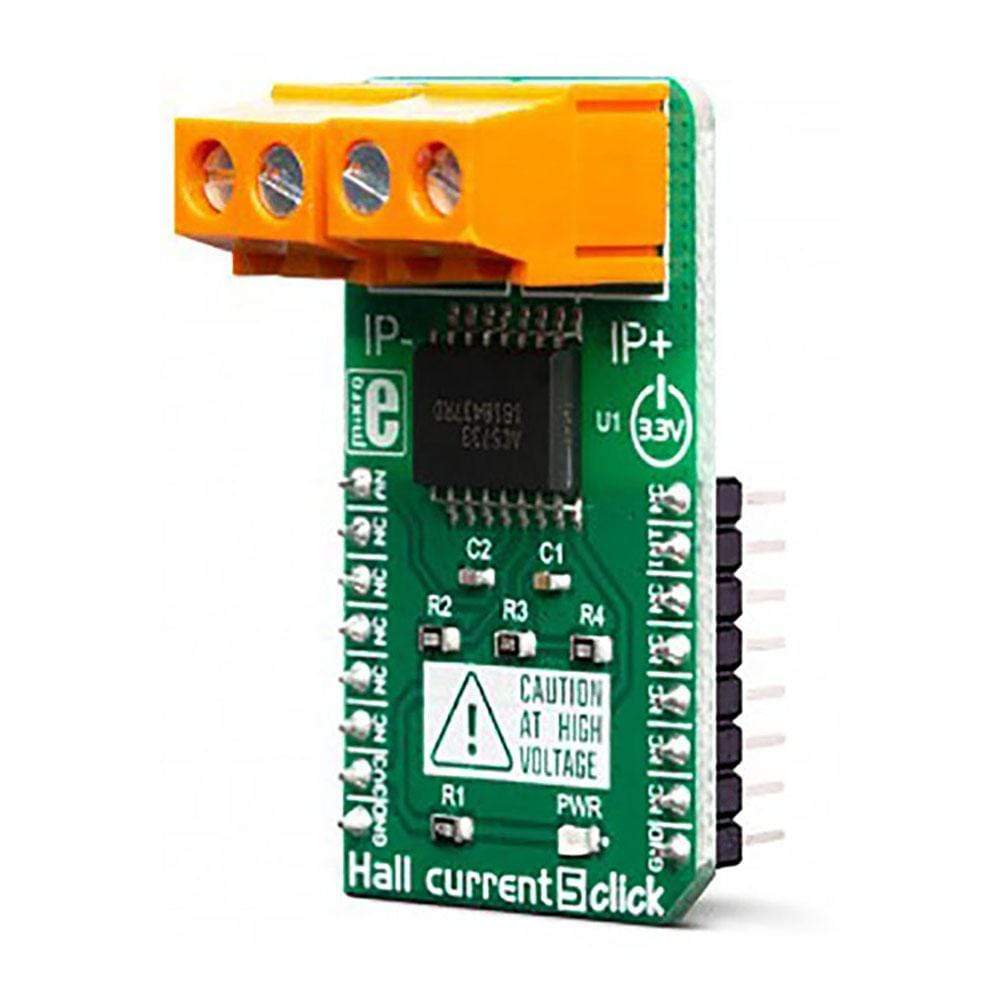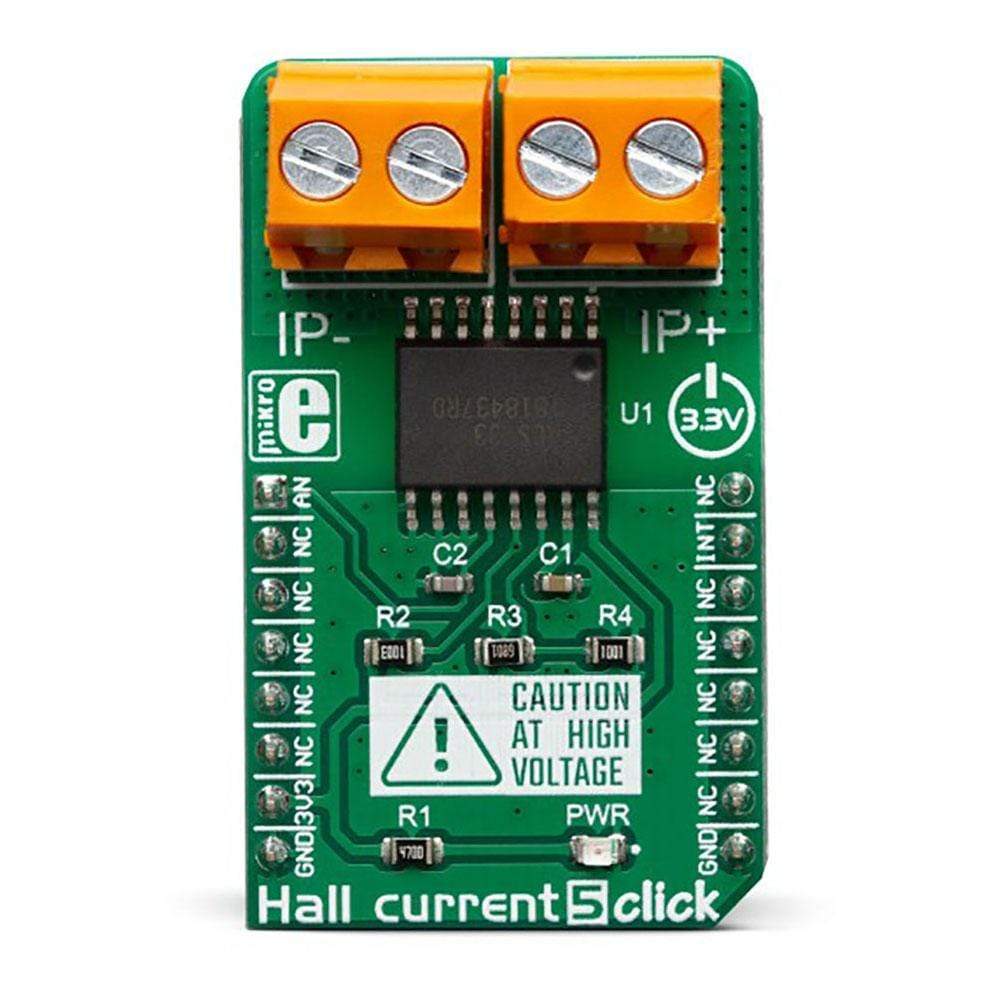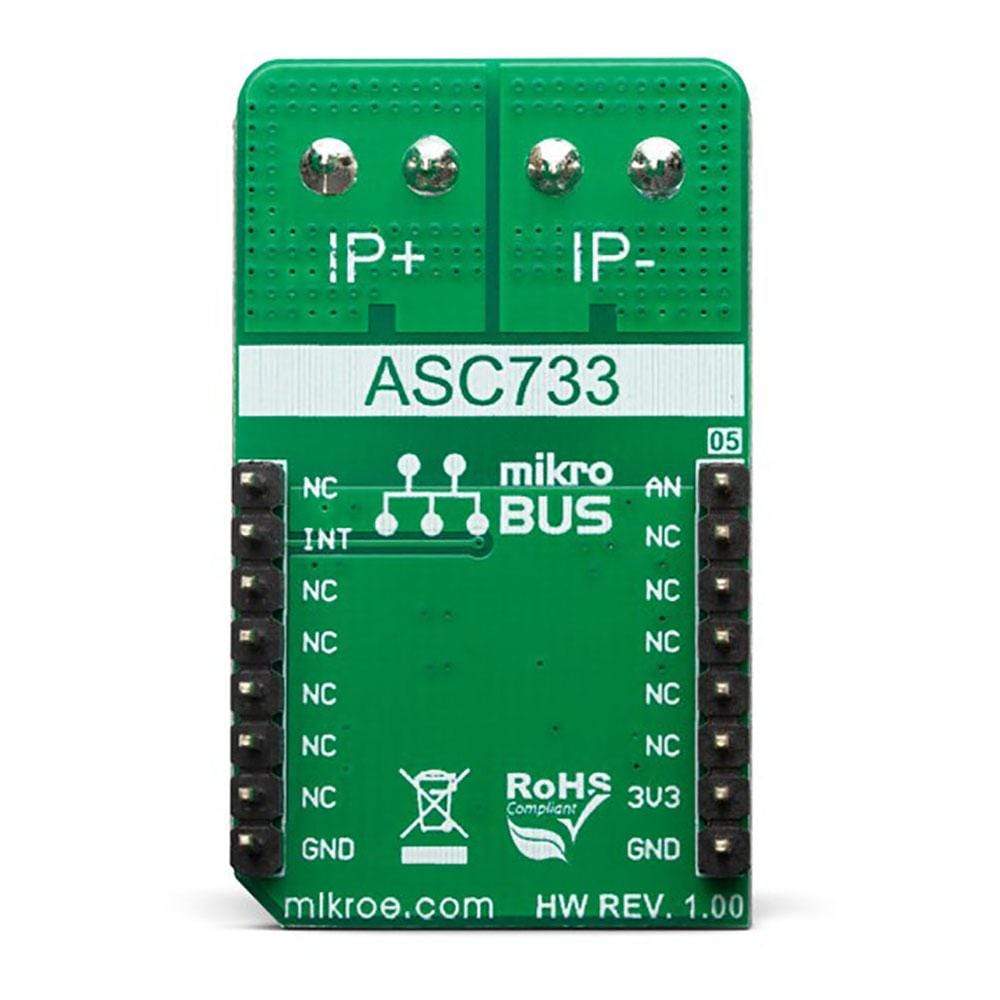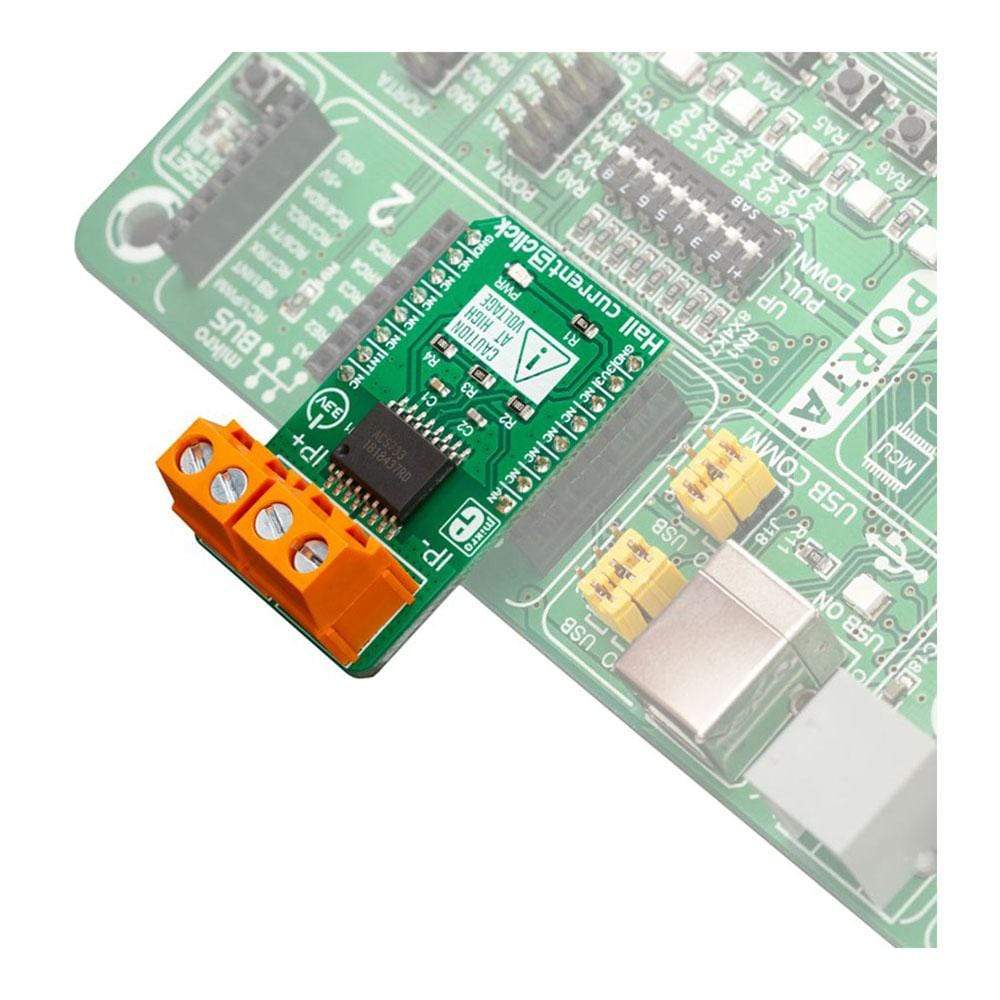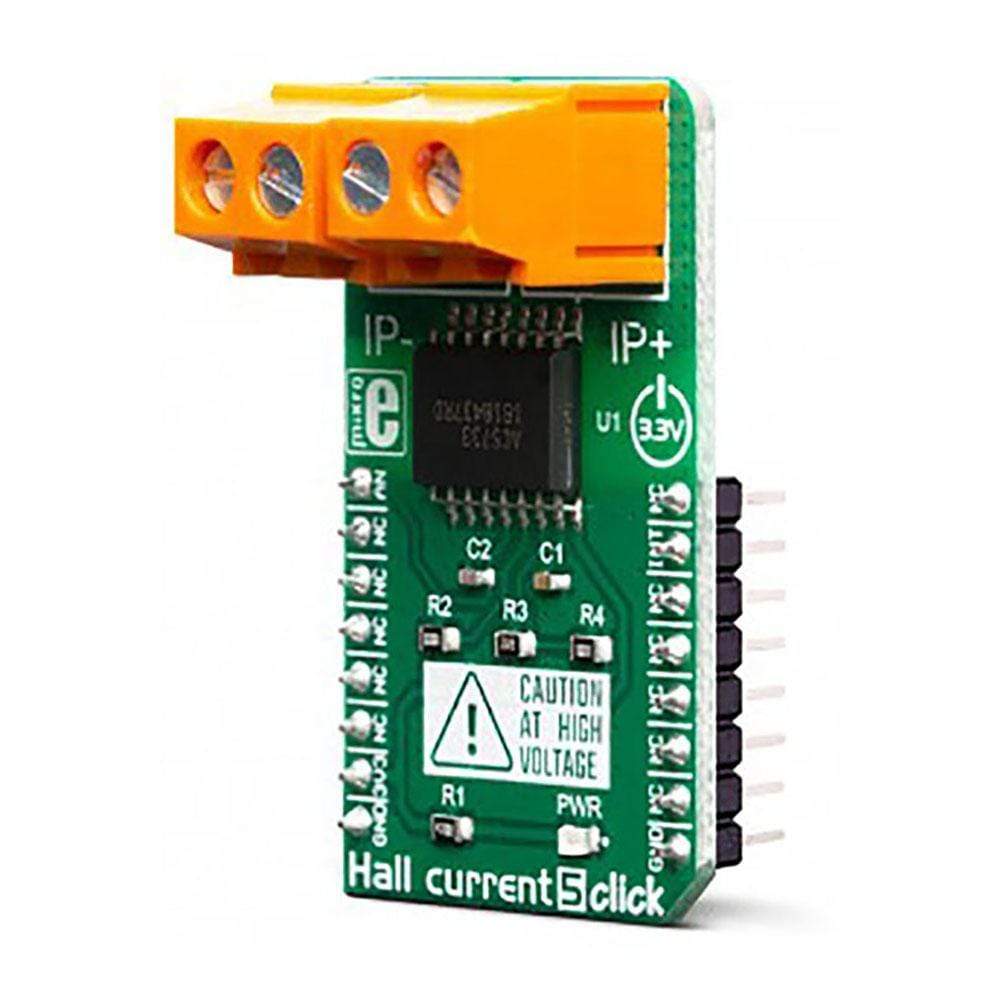
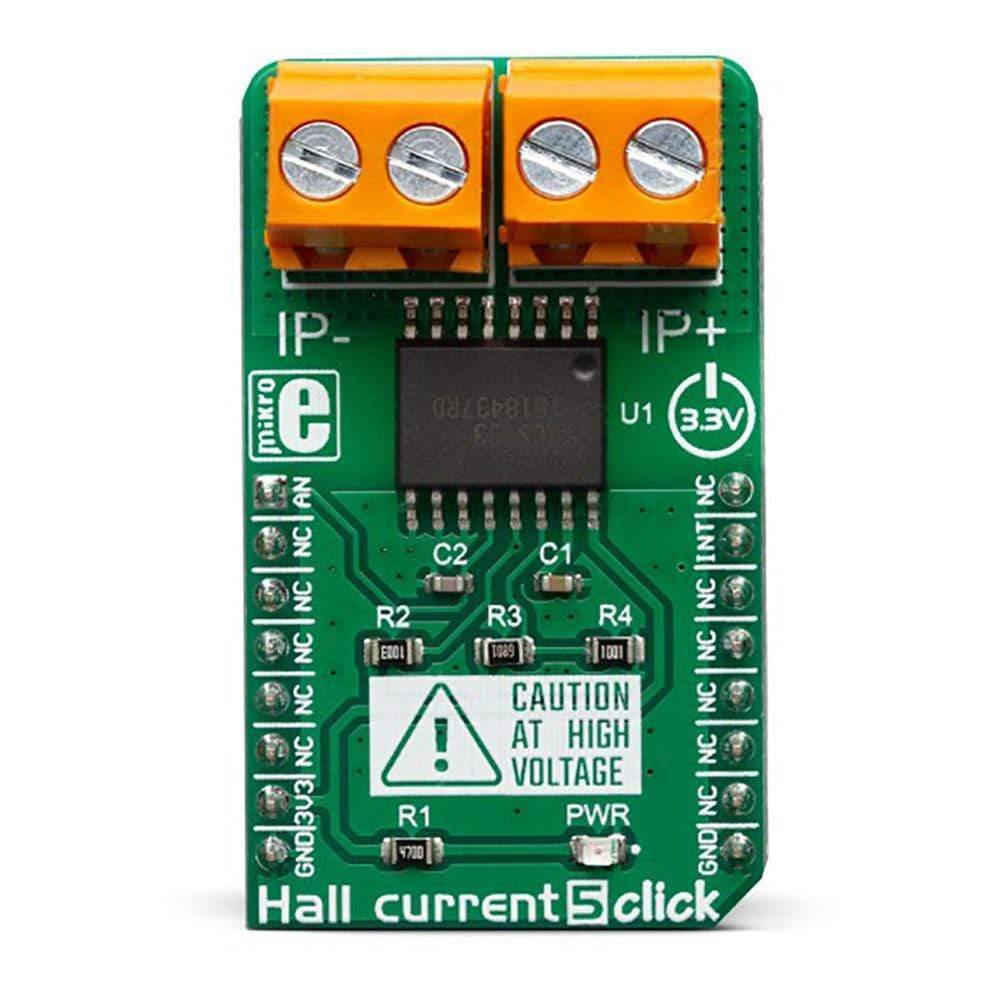
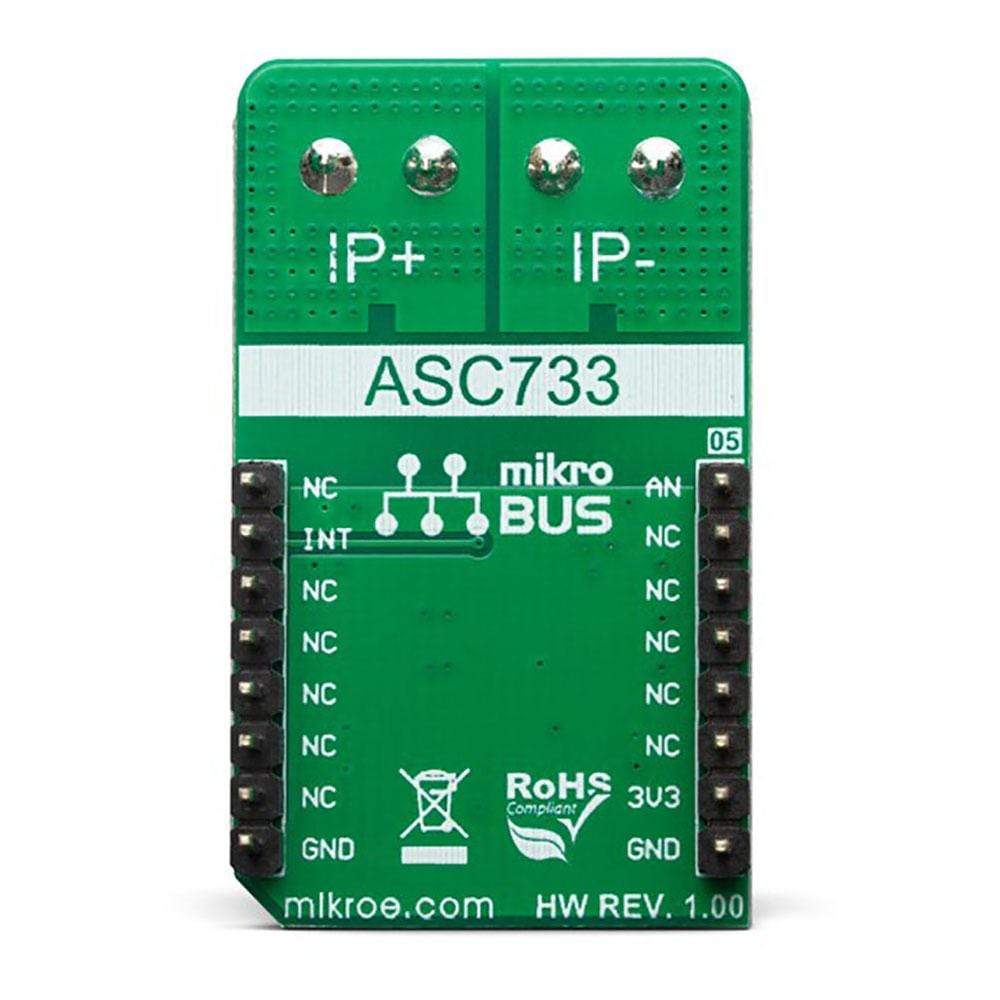
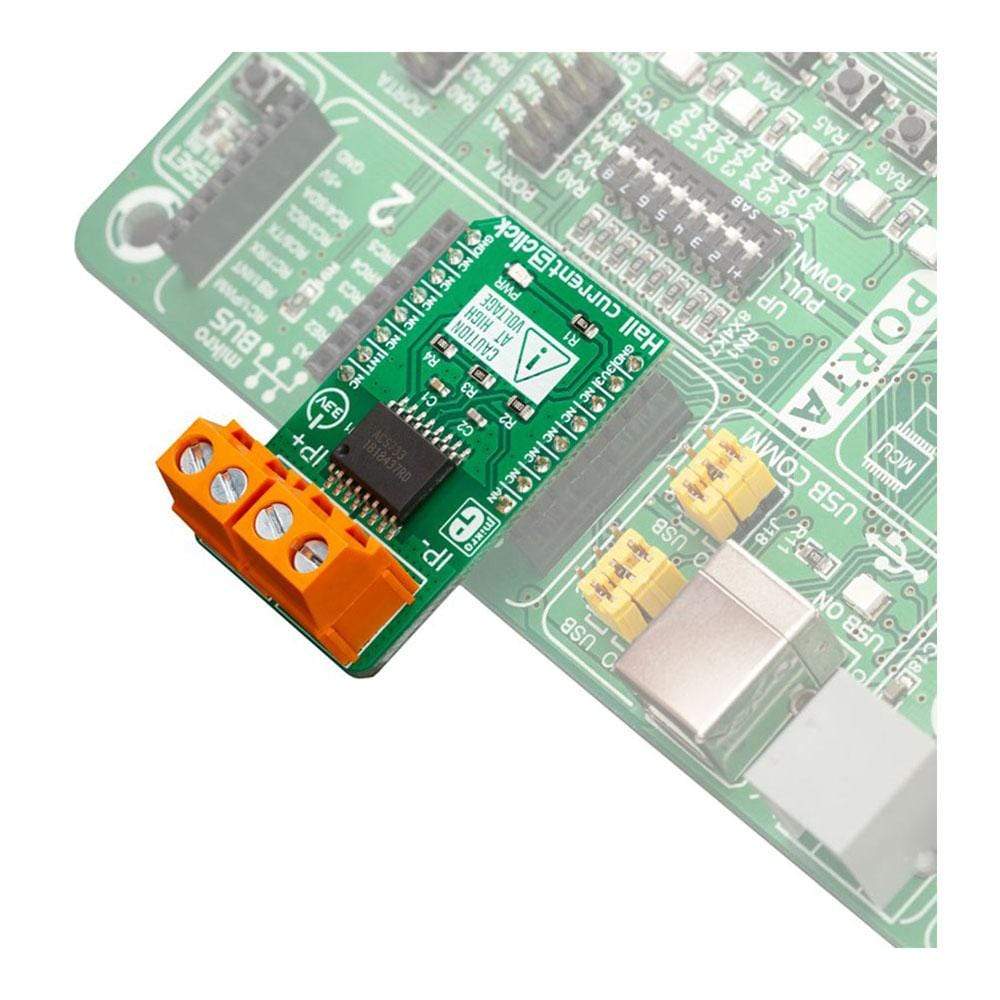
Overview
The Hall Current 5 Click Board™ is a very accurate electric current measurement Click Board™ based on the ACS733 IC. This IC is a galvanically isolated current sensor, which utilizes the Hall-effect principle. Its most distinctive feature is its very low series resistance of only 1 mΩ, which makes this device a nearly-perfect ammeter. The maximum current which can be measured with the Hall Current 5 Click Board™ ranges from -20 A to +20 A, with the optimised precision. By using the latest manufacturing technologies, the ACS733 can be used on very high frequencies, making it a perfect solution for a wide range of applications.
Downloads
Das Hall Current 5 Click Board™ ist ein sehr genaues Click Board™ zur Messung des elektrischen Stroms auf Basis des ACS733 IC. Dieser IC ist ein galvanisch isolierter Stromsensor, der das Hall-Effekt-Prinzip nutzt. Sein markantestes Merkmal ist sein sehr niedriger Serienwiderstand von nur 1 mΩ, was dieses Gerät zu einem nahezu perfekten Amperemeter macht. Der maximale Strom, der mit dem Hall Current 5 Click Board™ gemessen werden kann, reicht von -20 A bis +20 A, mit optimierter Präzision. Durch den Einsatz der neuesten Fertigungstechnologien kann das ACS733 bei sehr hohen Frequenzen verwendet werden, was es zu einer perfekten Lösung für eine Vielzahl von Anwendungen macht.
| General Information | |
|---|---|
Part Number (SKU) |
MIKROE-3393
|
Manufacturer |
|
| Physical and Mechanical | |
Weight |
0.019 kg
|
| Other | |
Country of Origin |
|
HS Code Customs Tariff code
|
|
EAN |
8606018714667
|
Warranty |
|
Frequently Asked Questions
Have a Question?
Be the first to ask a question about this.

